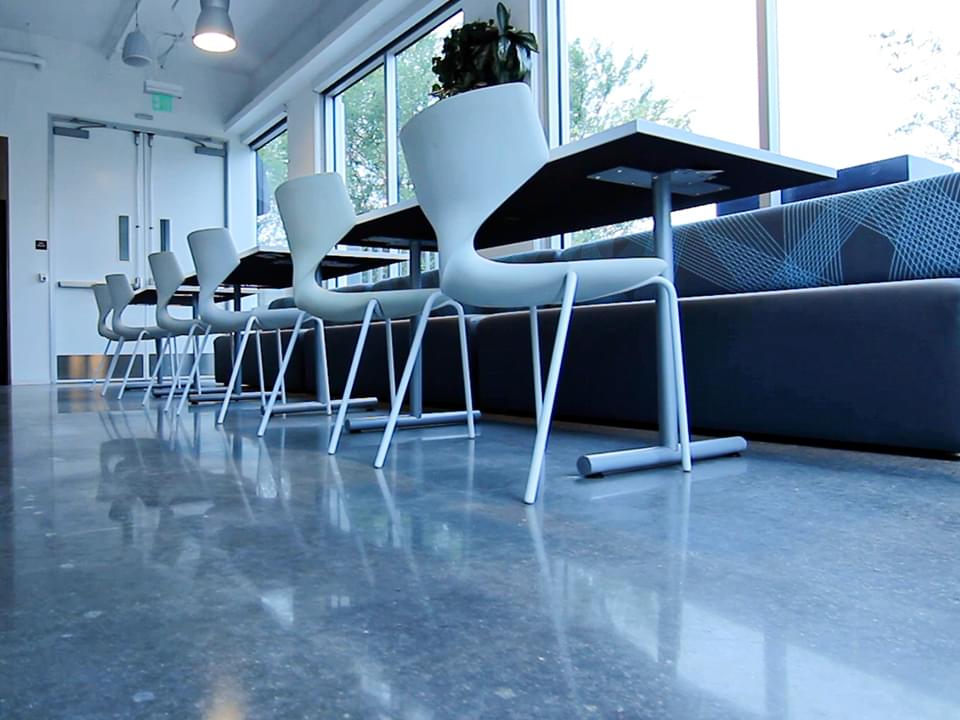
Concrete Flood Mitigation
& Restoration
Assessing the Problem
Water damage to concrete can come in from a couple different sources. These range from standing water on top of the surface of the slab, or from water seeping underneath from a leaking or burst pipe, to things like environmental floods.
In all of these scenarios there is hard water interacting with your concrete which can be troublesome quickly. The minerals in the hard water activate and react to the minerals in the concrete. The reaction triggers a bi-product that expels out of the concrete structure or slab, degrading the cement particles on the way out, ultimately damaging your concrete surface. Just like stalagmites forming in a cave, you will start to see a discoloration or salting on your concrete slab known as efflorescence or calcification. If not addressed quickly and is left for a long period of time without treatment, this can erode away the surface of your concrete severely damaging it.
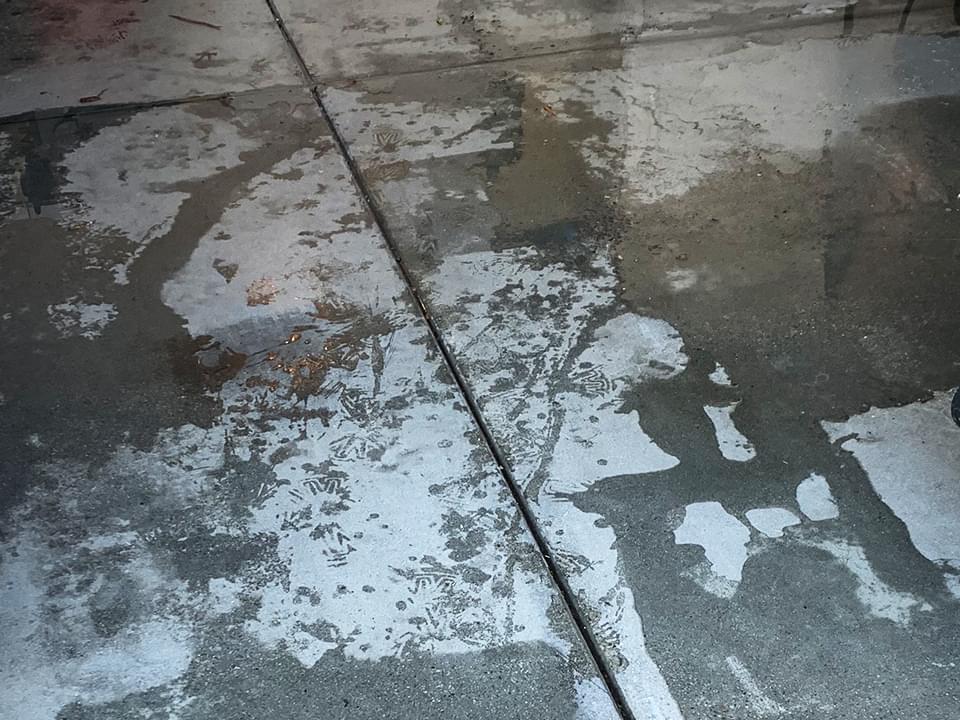
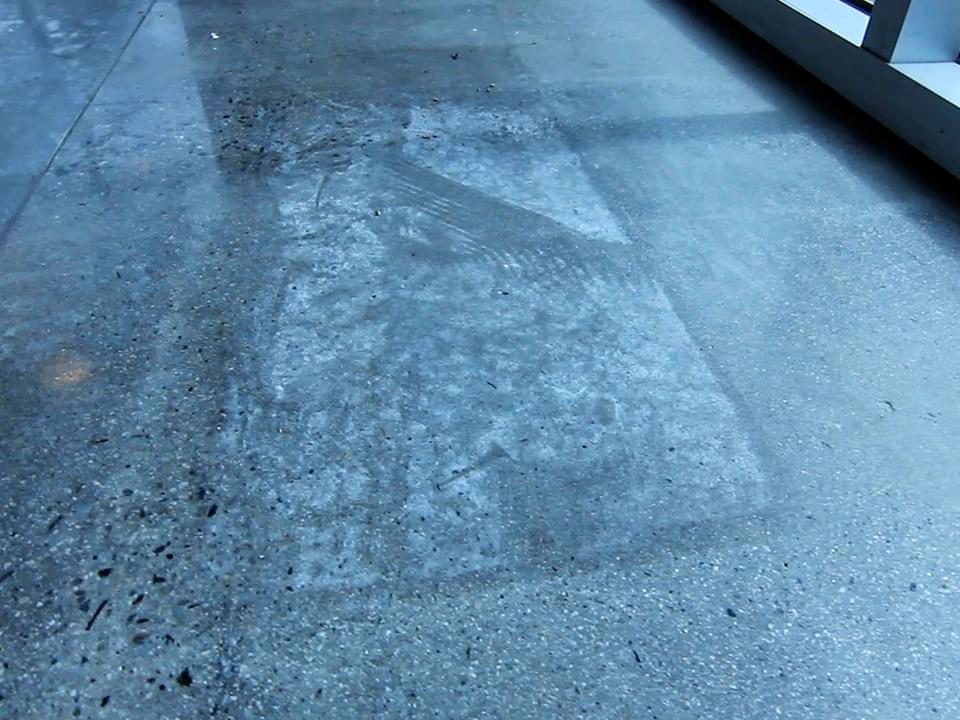
Recognizing the Damage
The term efflorescence is used to describe salts and other water-soluble materials coming to the surface of concrete. This excess in moisture pushes through the pours of the concrete and can transport calcium hydroxide, sodium, and/or potassium to the surface. While these minerals can be common in concrete, exposure to large amounts or consistent amounts of moisture can cause them to show in the form of efflorescence.
You will be able to recognize this as white salt or chalky in appearance, and will present itself like an opaque white powder accumulation sitting on the surface. This can occur anywhere but usually around the paths of least resistance like cracks or joints in the floor.
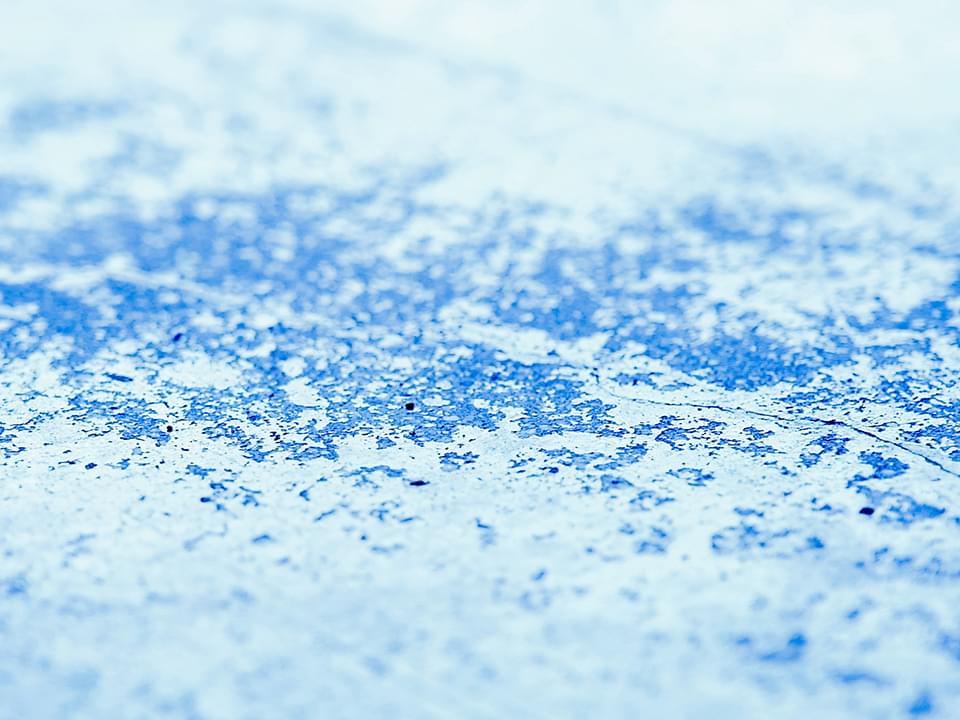
At first this will just look like white powder, but if left for long enough it will “eat away” and crumble the top layer of your concrete slab or structure and eventually mature into a bigger problem called spalling. Spalling will magnify the damage ten times as larger pitting and chunks begin to crumble and erode away from the surface leaving unsightly micro craters.
As you can see in the diagram, efflorescence pushes through the concrete and can delaminate and remove not only cement structures, but protective coatings as well from the top of your concrete slab. Where efflorescence has started, the process will continue to spread as long as the source of water remains untreated.
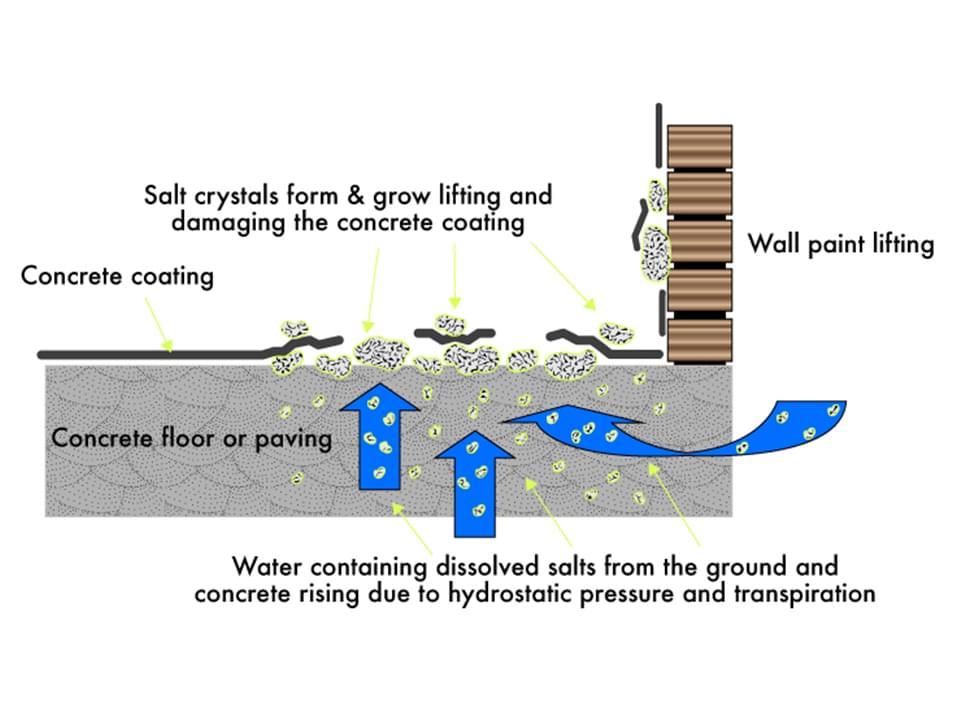
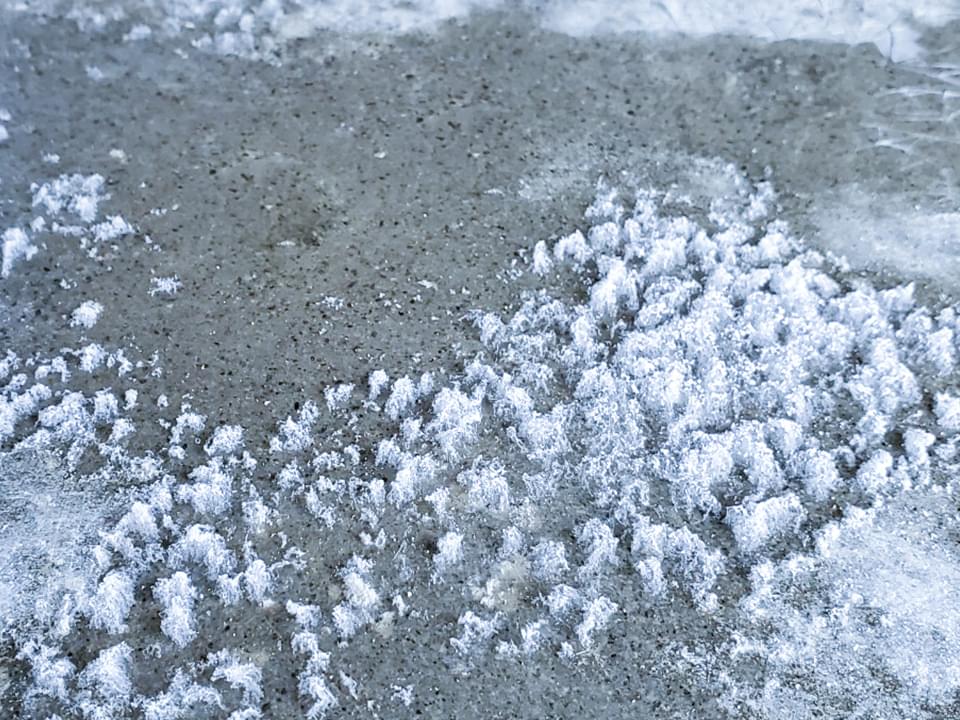
What's the Solution?
To effectively repair and prevent water damage in the event of flooding, there are some steps you can take. First it is important to open up the pores of the concrete to prepare the slab for a moisture treatment or vapor barrier. Then once our treatment is applied, the concrete will sit for a number of days. During this time the moisture treatment will impregnate a “non destructive jell” that penetrates into the slab structure filling the micro voids between concrete particles. This process purges much of the negative minerals that contribute to, or result in the water triggered problem. The treatment allows the slab to still “breath” which is essential for concrete, while expelling and resisting liquid and vapor traveling back through the slab. This treatment process pushes residual moisture to the surface of the concrete resulting in small piles of “salting”. This is a good sign that the treatment is working and a dirty mineral Purge has occurred. After the moisture treatment has penetrated the concrete slab, the concrete will need to be sealed or coated to prevent any future water damage. This process will treat the existing problem and is a preventative measure for future issues.
While water damage is treatable and we have seen a 98% success rate implementing this process. It should be noted that there is no guaranty from any manufacturer on the market that this system can completely eliminate liquid or vapor related issues, we have developed a system that has significant success rates in these scenarios.
If you have questions please call our team Today and set up a consultation.
